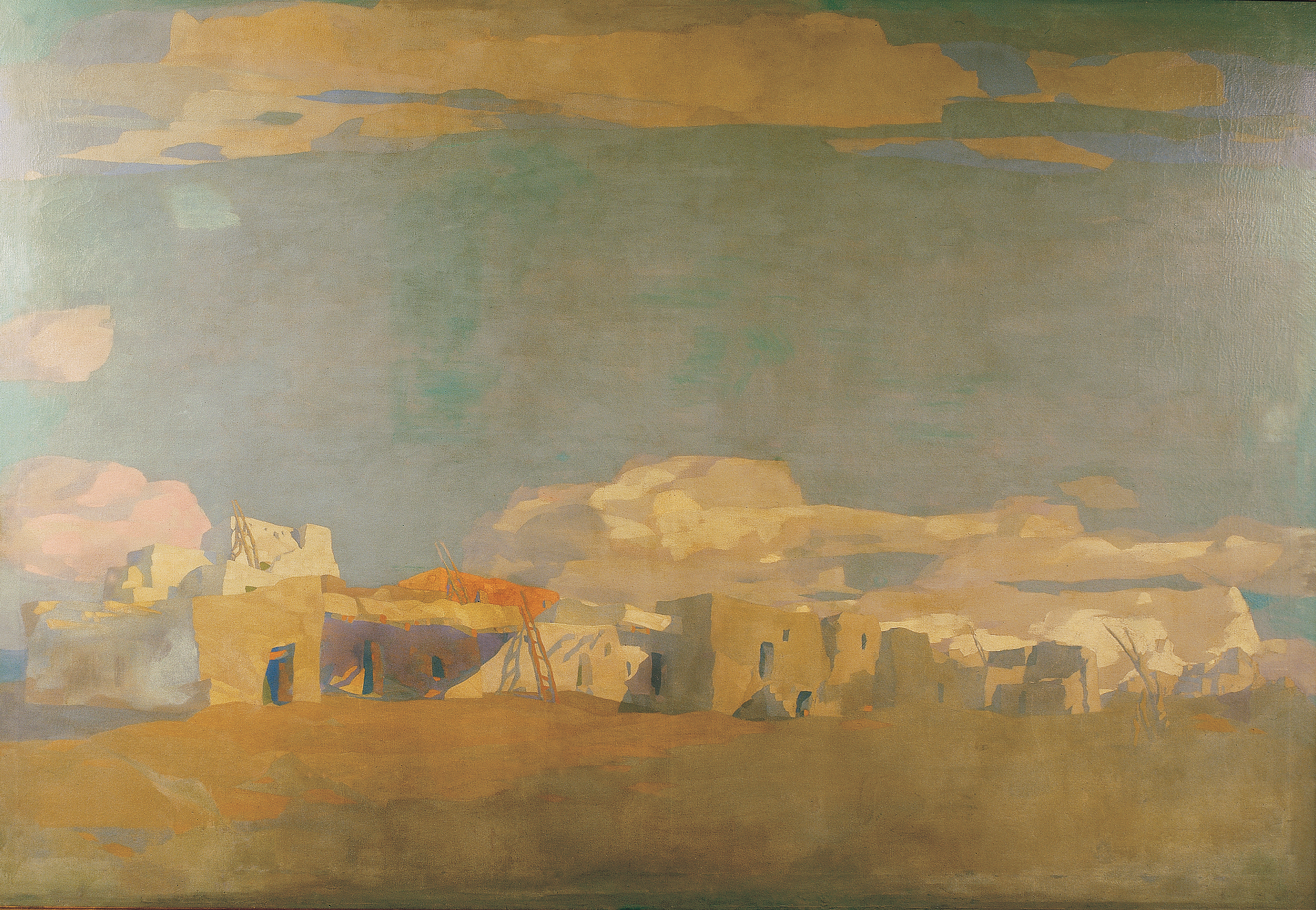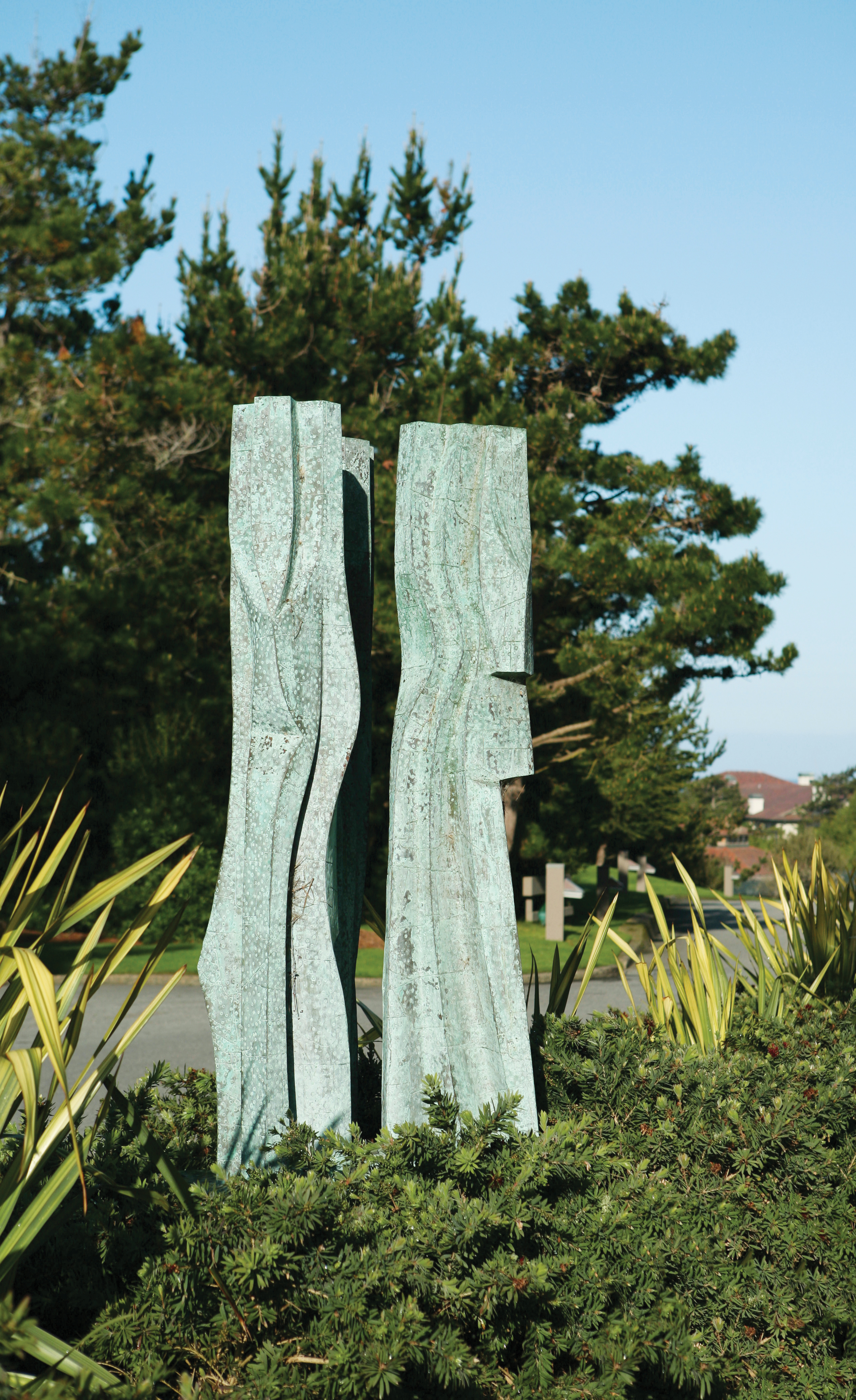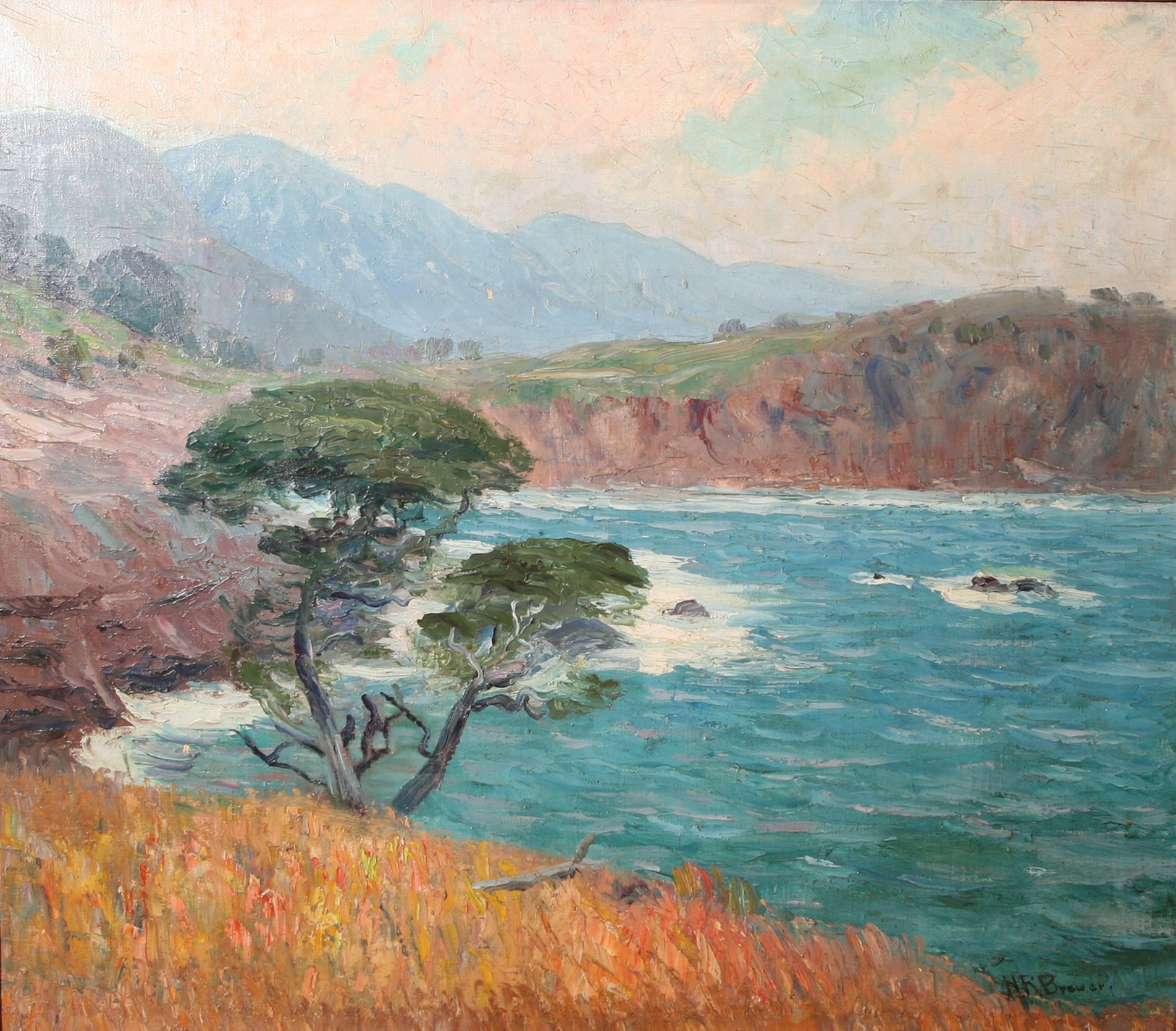If These Walls Could Talk: Art at Pebble Beach Resorts
This article originally appeared in an issue of Pebble Beach Magazine. Written by Steven Biller.
Most folks walk right past the dark painting in the gilded frame over the credenza in the newly renovated lobby of The Inn at Spanish Bay. And that’s a shame, because art and history buffs sometimes make a special trip to Pebble Beach Resorts for the opportunity to stand in front of it as if they were in a museum.
Adobe in Monterey is one of the best and largest (30 by 48 inches) canvases by San Franciscan artist Charles Rollo Peters (1862-1928), who earned his place in history by painting nocturnes on the Monterey Peninsula. It embodies the artist’s most desirable qualities, particularly his distinctive tonalism, the moody and atmospheric style that coursed through Northern California art through 1915. “The artist’s handling of the scene becomes extremely soft and broad, and the entire color scheme is sublimated to one prevailing shade or tone,” author Nancy Moure explains in her encyclopedic California Art: 450 Years of Paintings & Other Media. “Most often the style was employed by artists who had studied in Paris or trained under artists who had studied there.”
Indeed, Peters trained under Jules Tavernier and studied in Paris at École des Beaux-Arts and Académie Julian, where he found encouragement in the work of James McNeill Whistler. Peters painted his first nocturne on the hilly peninsula of Brittany, famously stating that the view there looked better by moonlight. He eventually earned the nickname The Prince of Darkness, and lore holds that Whistler once remarked that Peters was the only artist other than himself who could paint nocturnes.
Adobe in Monterey, an impeccable example of Peters’ blue-black coloration, hangs between the concierge desk and The Lobby Bar, evoking a stillness and tranquility that invites visitors to look and linger.
And this is only one of the historic works of art installed throughout Pebble Beach Resorts, where the collection mirrors the Monterey artist colony’s coming of age.
In the wake of the 1906 earthquake, Bay Area artists began flowing to the Monterey Peninsula, and a year later, the art gallery at Hotel Del Monte opened and gave them a place to exhibit and sell their work. “Not only did the gallery give the hotel cachet and support the artists,” Moure notes in her trenchant history, “it also introduced tourists from the East Coast and the Midwest to the fine paintings produced by California artists, particularly the tonalists from Northern California.”
In the decades that followed, Pebble Beach founder and developer Samuel F.B. Morse, a painter in his own right (see his 1957 Old Del Monte above, and in the hallway outside The Card Room at The Lodge), amassed a collection that includes works by some of the most important artists of the early California impressionist period. Their paintings hang throughout Pebble Beach Resorts alongside photography, sculpture and contemporary landscape paintings.
Here’s a walking tour highlighting some of the most notable works:
Pueblo by Francis McComas (1875-1938)
The Inn at Spanish Bay: North Conference Hallway

After a 1924 fire gutted the main building of Hotel Del Monte, Morse commissioned McComas to paint murals for the new lobby. He created two large-scale, tonalist Pueblo paintings. In exchange, Morse gave the artist and his artist-wife, Eugenia “Gene” Frances Baker, a parcel of land where they built a home and studio. McComas was known for his paintings and murals that interpreted the mood of New Mexico pueblos and Hopi villages with broad washes and muted colors, like this painting.
Pescadero Point by Paul Whitman (1897-1950)
The Inn at Spanish Bay: North Conference Center Hallway
Across from the McComas Pueblo paintings hangs this intricate drawing by Whitman, who had served in the field artillery in World War I and sold insurance in St. Louis before settling in Carmel, studying with the legendary Armin Hansen, and becoming known for his watercolors.
Kelp by Melvin Schuler (1924-2012)
17-Mile Drive Entrance to The Inn at Spanish Bay

Schuler, professor emeritus at Humboldt State University, carved his sculptures from recycled old-growth redwood and covered them in copper to weather the elements.
Untitled (Point Lobos) by Thomas McGlynn (1878-1966)
The Inn at Spanish Bay: Outside Pèppoli and Traps
McGlynn, a San Franciscan who trained under Arthur Mathews, became interested in the subtle effects of light after viewing French impressionist paintings at the 1915 Panama-Pacific International Exposition. He emerged as one of the most lyrical painters of the California luminists and often depicted cypress and coastal scenes like this painting.
Morning Fog in Del Monte by Ansel Adams (1902-1984)
The Lodge at Pebble Beach: Concierge Desk
The photographer visited the Monterey Peninsula several times since the 1920s. This photograph (circa 1964) shows a dirt road in the Del Monte Forest, where trees soar and fog fills the view in the distance. Hotel Del Monte Sign, one of four Adams prints in the Pebble Beach collection, appeared in Fortune Magazine in January 1940.
Monterey Shore by Henry Joseph Breuer (1860-1932)
The Lodge at Pebble Beach: Stairway Leading to The Bench

The Philadelphia native who once called the sea his most elusive subject created one of the most vibrant of the historic paintings in the Pebble Beach collection. Breuer, who was the art editor of the San Francisco Chronicle and then editor of The Californian magazine, quit publishing in 1902 to make art, and he won a gold medal for his efforts at the 1915 Panama-Pacific exhibition.
What piece of artwork from the Pebble Beach collection would you add to this walking tour?